Museums & Galleries
Landmarks & Heritage
Hidden Gems & More
Food & Drink
Entertainment & Lifestyle
Nature & Outdoors
Landmarks and Monuments
1. Statue Of Liberty: Iconic Neoclassical Monument Symbolizing Freedom & Welcome On New York’s Liberty Island

An enduring symbol of freedom and democracy, the Statue of Liberty has steadfastly welcomed scores of immigrants looking to start anew in the United States for over 130 years. Conceived as a tribute to the values of democracy that the United States and France cherished, this awe-inspiring creation is a joint collaboration between the two countries. French sculptor Frédéric Auguste Bartholdi's magnificent creation stands tall on Liberty Island, an icon of hope for millions of people yearning for a better life.
Lady Liberty's 305-foot statuesque frame, holding her torch high in one hand, and the Declaration of Independence in the ...
2. Empire State Building: Ascend New York’s 102-Story Art Deco Icon For Unparalleled Manhattan Panoramas
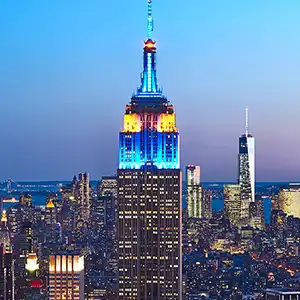
Soaring above the iconic skyline of New York City stands the remarkable architectural marvel, the Empire State Building. Since its completion in 1931, this magnificent structure has remained an emblematic symbol of New York's strength, resilience, and aspirations, drawing visitors from across the globe to experience its grandeur.
Touted as one of the most famous buildings in the world, the Empire State Building boasts an astounding 102 stories, making it the tallest building of its time until the completion of the World Trade Center's North Tower in 1970. Even today, it is still the fifth-tallest skyscraper in the United States, ...
3. Brooklyn Bridge: Stroll Iconic Gothic-Arch Span & Panoramic Manhattan Views Over The East River
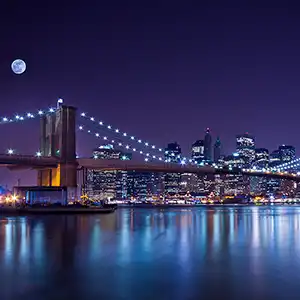
The Brooklyn Bridge, spanning the East River in New York City, is not just an iconic piece of architecture but a symbol of innovation, resilience, and unity. Opened in 1883, it was the world's first steel-wire suspension bridge and, at the time, the longest suspension bridge in the world. Connecting the boroughs of Manhattan and Brooklyn, the bridge has become an enduring symbol of New York City, offering both residents and visitors alike a unique vantage point of the city's skyline and a pedestrian path that invites exploration and admiration.
Walking across the Brooklyn Bridge is an experience that encapsulates ...
4. 9/11 Memorial And Museum: Honor Fallen Heroes & Reflect On Resilience At Ground Zero’s Poignant Tribute

The 9/11 Memorial & Museum, located at the World Trade Center site in Lower Manhattan, stands as a profound tribute to the nearly 3,000 lives lost in the terror attacks of September 11, 2001, and February 26, 1993. This solemn site serves not only as a place of remembrance and reflection for those who perished but also as a poignant reminder of resilience, unity, and the indomitable spirit of New York City and the nation.
The Memorial's design, titled "Reflecting Absence," features two massive waterfalls and reflecting pools, each set within the footprints of the original Twin Towers. The names ...
5. New York Public Library: Explore Iconic Beaux-Arts Landmark & World-Renowned Research Collections
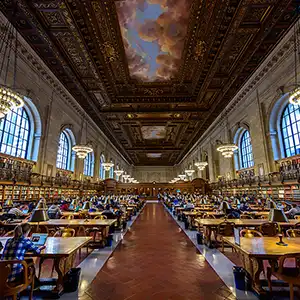
The New York Public Library (NYPL), with its majestic lion statues guarding the entrance, stands as a beacon of knowledge and culture at the heart of Manhattan. This iconic institution, located on Fifth Avenue and 42nd Street, is not only one of the largest public libraries in the United States but also among the most significant research libraries in the world. Beyond its vast collections, the library serves as a community hub, offering an array of free programs, workshops, and exhibitions that enrich the cultural tapestry of New York City.
Stepping into the main branch of the NYPL, known as ...
6. Times Square: Immerse In New York’s Neon Heartbeat & World-Famous Broadway Crossroads
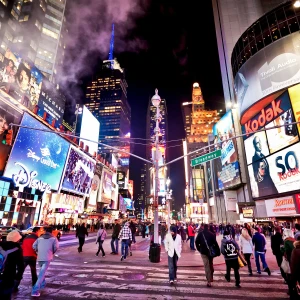
Immerse yourself in the vibrant energy of New York City as you take a stroll through one of the world's most iconic landmarks - Times Square. Often referred to as the "Crossroads of the World," this bustling commercial, entertainment, and cultural hub is a must-visit destination for those who want to truly capture the essence of the Big Apple.
Located at the junction of Broadway and Seventh Avenue, Times Square spans from West 42nd to West 47th Streets, welcoming millions of visitors each year. Dazzled by the colorful billboards, flashing advertisements, bustling street performers, and a myriad of famous theaters, ...
7. Rockefeller Center: Explore Midtown’s Art Deco Campus & “Top Of The Rock” Panoramas
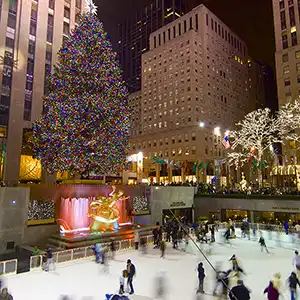
Rockefeller Center, an iconic complex in the heart of Midtown Manhattan, is synonymous with New York City's cultural and architectural vibrancy. Envisioned by John D. Rockefeller Jr. in the 1930s as a "city within a city," Rockefeller Center is a masterpiece of urban design, integrating commercial and entertainment spaces in a harmonious and dynamic setting. This landmark destination, spanning 22 acres and comprising 19 commercial buildings, stands as a testament to American innovation and ambition, drawing visitors from around the world to its famed attractions, seasonal events, and architectural beauty.
The centerpiece of Rockefeller Center is the GE Building, also ...
8. One World Observatory: Ascend New York’s Tallest Skyscraper For Unrivaled 360° City & Harbor Vistas

One World Observatory, perched atop the One World Trade Center in New York City, stands as a monument of resilience and a testament to human ingenuity. Rising above the Manhattan skyline, it offers visitors an unparalleled view of New York City from the highest point in the Western Hemisphere. This observatory, more than just an architectural marvel, symbolizes the spirit of the city, offering a unique blend of breathtaking vistas, cutting-edge technology, and poignant reminders of the past.
Visitors to the One World Observatory begin their journey in the Global Welcome Center, where an array of screens greets them in ...
9. Grand Central Terminal: Marvel At Beaux-Arts Splendor & Bustling Transit Hub In Midtown Manhattan

Grand Central Terminal, often simply called Grand Central, is not merely a hub for commuters but a landmark of New York City that epitomizes the grandeur and dynamism of the metropolis. Located at 42nd Street and Park Avenue in Midtown Manhattan, this iconic station is one of the world’s most visited and recognized transit centers, celebrated for its architectural beauty, historical significance, and vibrant atmosphere. With over 750,000 visitors daily, Grand Central serves as a living museum that offers a window into the past, present, and future of urban travel.
The terminal's main concourse is the heart of Grand Central, ...
10. Edgar Allan Poe Cottage: Step Into The Final Home Of America’s Master Of The Macabre In The Bronx
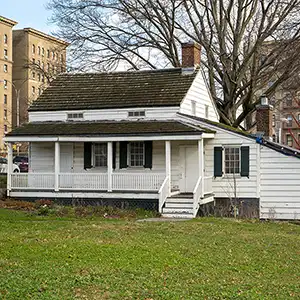
Tucked away in a quiet corner of the Bronx, New York, sits a modest cottage with a history as captivating as the stories of the man who once called it home. The Edgar Allan Poe Cottage, a humble abode with its wooden frames and quaint facade, whispers tales of one of America's most iconic literary figures. This historic site offers a rare glimpse into the final years of Edgar Allan Poe's tumultuous life, providing an intimate look at both the man and the myth.
Edgar Allan Poe, a name synonymous with macabre tales and poetic masterpieces, moved to this then-rural ...
Museums and Art Galleries
11. Metropolitan Museum Of Art: Explore Over 5,000 Years Of Global Art Masterpieces In New York’s Iconic “The Met”
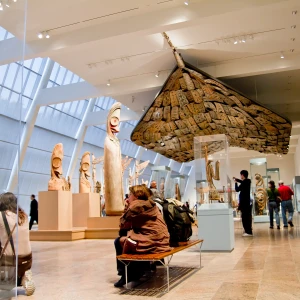
Within New York City lies a treasure trove of artistic excellence, a sanctuary for art lovers and enthusiasts worldwide - the Metropolitan Museum of Art, or "The Met" as it is fondly known. Housing a collection spanning over 5,000 years of art history and boasting over two million works of art, the Met is undeniably one of the most revered and significant art institutions in the world.
Founded in 1870 with the aspiration to encourage the study of fine arts and their application to everyday life, the Met has since expanded both its monumental Beaux-Arts home on Fifth Avenue and ...
12. Museum Of Modern Art: Discover Groundbreaking Contemporary & 20th-Century Masterpieces In Midtown Manhattan
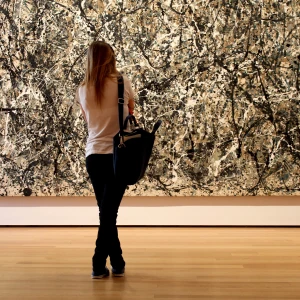
Welcome to the enthralling realm of creative innovation and cutting-edge artistic expression! The Museum of Modern Art (MoMA), an iconic institution that has shaped our understanding of modern and contemporary art, serves as a sanctuary for enthusiasts and novices alike. Housing an exceptional collection of artwork from various disciplines like painting, sculpture, photography, design, and film, MoMA ensures that every visitor experiences the groundbreaking ideas and inspirations of the epoch's most notable artists through carefully curated exhibitions.
Established in 1929, MoMA has continuously challenged the boundaries of creativity, providing a platform for thought-provoking dialogues centered on the transformative power of ...
13. American Museum Of Natural History: Discover World-Class Dinosaur Halls & Cosmic Exhibits On Manhattan’s Upper West Side
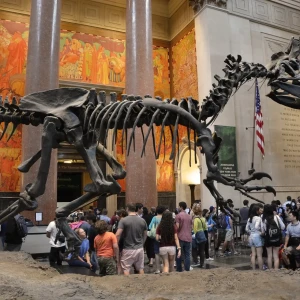
Step into a treasure trove of knowledge and wonderment at the American Museum of Natural History, New York City's iconic institution that showcases the world's natural wonders and scientific discoveries. Established in 1869, the museum has come to be known as one of the leading cultural and educational establishments dedicated to the understanding and preservation of our planet.
With 45 permanent exhibition halls, the American Museum of Natural History has everything from rare artifacts and impressive specimens to engaging interactive exhibits. Visitors embark on a journey through the marvels of Earth's biodiversity, the mysteries of outer space, and the fascinating ...
14. Whitney Museum Of American Art: Discover Cutting-Edge American Masterpieces In New York’s Meatpacking District
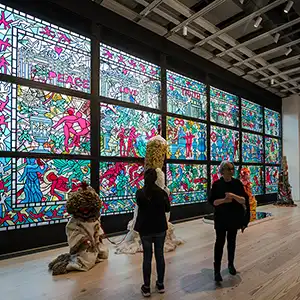
The Whitney Museum of American Art, located in New York City's vibrant Meatpacking District, stands as a pillar of modern and contemporary American art. Founded in 1930 by the visionary artist and patron Gertrude Vanderbilt Whitney, the museum has dedicated itself to fostering the work of living artists, providing them with a platform to showcase their work and engage with the public. The Whitney's collection, which comprises over 25,000 works by approximately 3,500 artists, spans the 20th and 21st centuries, showcasing a diverse range of artistic expression, from early modernism to contemporary pieces.
The museum's building, designed by the renowned ...
15. Solomon R. Guggenheim Museum: Experience Frank Lloyd Wright’s Spiraling Icon & Masterworks Of Modern Art
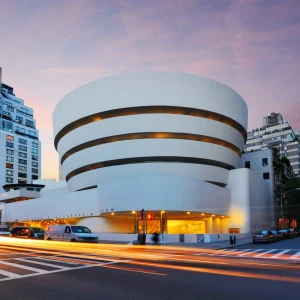
The Solomon R. Guggenheim Museum, more commonly known as the Guggenheim, stands as a beacon of modern art on New York City's famed Museum Mile. Designed by the legendary architect Frank Lloyd Wright, the building itself is as much a work of art as the collections it houses. Since its opening in 1959, the Guggenheim has been dedicated to the promotion of modern and contemporary art, offering visitors a unique journey through the evolution of artistic expression in the 20th and 21st centuries.
One of the most striking features of the Guggenheim is its distinctive spiral design, which represents a ...
16. The Cloisters: Discover Medieval Art & Tranquil Gardens In Manhattan’s Gothic-Style Fortress
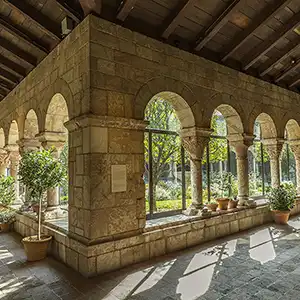
The Cloisters, located in Fort Tryon Park in Upper Manhattan, is a branch of The Metropolitan Museum of Art dedicated to the art, architecture, and gardens of medieval Europe. Nestled atop a hill overlooking the Hudson River, The Cloisters offers a serene escape from the hustle and bustle of New York City, transporting visitors back in time to the Middle Ages. This unique museum, with its collection of European medieval art, is housed in a structure that is itself a tapestry of historic architecture, incorporating elements from five medieval French cloisters.
The museum's collection encompasses approximately 2,000 works of art, ...
17. Ellis Island Immigration Museum: Step Into America’s Gateway Of Hope With Historic Passenger Halls & Personal Stories

Around the world, Ellis Island is synonymous with the story of American immigration. As the primary immigrant processing station between 1892 to 1954, it has become an iconic symbol of hope, opportunity, and the American Dream for millions of people. For many immigrants, Ellis Island was the gateway to a new life in the United States, offering the promise of freedom and a chance to achieve success through hard work and determination.
Located in the Upper New York Bay near the Statue of Liberty, Ellis Island was once only three acres of land, but it was expanded to 27.5 acres ...
Parks and Nature
18. Central Park: Explore Manhattan’s Urban Oasis With Scenic Landscapes & Iconic Attractions

In the midst of the bustling concrete jungle of New York City lies an emerald haven for all to enjoy: Central Park. Encompassing an expansive territory of 843 acres, Central Park serves as an urban oasis for millions of city dwellers and tourists alike. This iconic landmark, designed by Frederick Law Olmsted and Calvert Vaux in 1858, is a perfect blend of natural beauty and cultural attractions, offering a rejuvenating retreat from the frenetic energy of city life.
Central Park is home to countless leisurely pursuits, such as serene boat rides on its tranquil lakes, invigorating strolls or bike rides ...
19. The New York Botanical Garden: A Living Masterpiece Of Nature
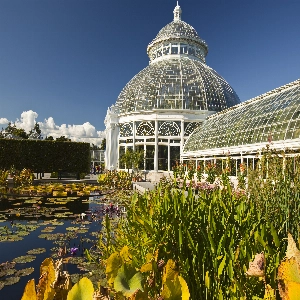
The New York Botanical Garden (NYBG), nestled in the Bronx, is an oasis of nature in the midst of the urban landscape of New York City. Spanning 250 acres of lush landscapes and offering a diverse array of plant life, the garden is a living museum, an educational institution, and a conservation organization all rolled into one. Since its founding in 1891, the NYBG has been dedicated to the study and appreciation of the planet's plant biodiversity, providing a serene escape for nature lovers and a vital resource for scientists and researchers.
Visitors to the NYBG can explore a wide ...
20. High Line: Stroll Elevated Urban Park With Art, Gardens & Hudson River Views In Chelsea
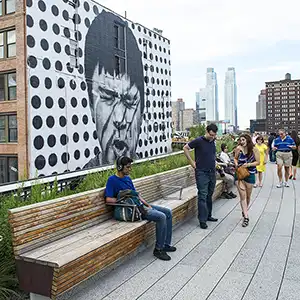
The High Line, an elevated park in New York City, is a prime example of urban revitalization and innovative landscape architecture. This 1.45-mile-long greenway, built on a historic freight rail line elevated above the streets on Manhattan's West Side, has transformed an industrial relic into one of the city's most beloved public spaces. Since its opening in 2009, the High Line has become a symbol of creativity and community, offering residents and visitors alike a unique perspective of the city, lush horticulture, and a peaceful retreat from urban life.
Walking along the High Line provides a unique vantage point from ...
21. Staten Island: Discover New York’s “Forgotten Borough” Of Historic Villages, Waterfront Parks & Panoramic Harbor Views

The Staten Island Ferry, an iconic symbol of New York City, offers more than just a means of transportation; it provides a unique and scenic 25-minute journey across New York Harbor. Connecting the boroughs of Manhattan and Staten Island, the ferry is a vital link for commuters, but it also serves as a popular attraction for tourists seeking breathtaking views of the Statue of Liberty, Ellis Island, and the Manhattan skyline. Operating 24 hours a day, seven days a week, the ferry is one of the last remaining vestiges of an entire ferry system that once connected various parts of ...
22. Bryant Park: Relax In Midtown’s Charming 9.6-Acre “Backyard” With Seasonal Events & Lawn Games
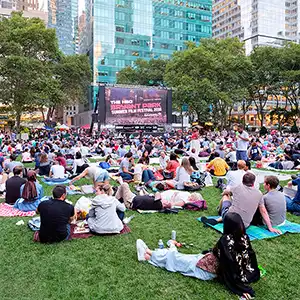
Bryant Park, nestled in the heart of Midtown Manhattan behind the New York Public Library, stands as a verdant oasis amidst the concrete jungle of New York City. This 9.6-acre park, once a potter's field and a military drill ground, has transformed into one of the city's most cherished public spaces, drawing both locals and tourists with its lush lawns, elegant gardens, and myriad of free activities. Bryant Park's evolution from a neglected area into a model of urban revitalization showcases the potential of public spaces to enhance city life.
The park's design elegantly balances natural beauty with recreational amenities, ...
23. Brooklyn Botanic Garden: Wander 52 Acres Of Themed Gardens & Seasonal Blossoms In Prospect Park’s Blooming Oasis
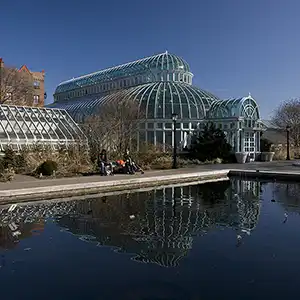
Nestled in the bustling heart of Brooklyn, the Brooklyn Botanic Garden stands as an oasis of nature's serenity amidst urbanity. This verdant expanse offers more than just a pleasing aesthetic; it's a sanctuary where nature and nurture blend harmoniously. Spanning over 52 acres, the garden is a living museum of plants, an educational center, and a conservation organization all rolled into one. It invites visitors from around the globe to explore its extensive collection of flora, set within a series of specialized gardens, each offering its unique charm and botanical wonders.
One of the garden's crown jewels is the Japanese ...
24. Brighton Beach: Dive Into Brooklyn’s “Little Odessa” Of Authentic Cuisine & Relaxed Shoreline Vibes

Stepping into the vibrant heart of Harlem, New York, the Apollo Theater emerges not only as a landmark but also as a testament to the transformative power of music, culture, and history. Since its inception in 1934, the Apollo has been a beacon of African-American talent, nurturing legends and providing a platform for emerging artists. The experience of visiting the Apollo Theater is unparalleled, offering a deep dive into the very soul of American entertainment.
The Apollo's significance extends beyond its walls, having played a pivotal role in the careers of icons such as Ella Fitzgerald, James Brown, Michael Jackson, ...
25. Governors Island: Escape Manhattan’s Bustle On A Historic Harbor Island With Parks & Panoramic Skyline Views
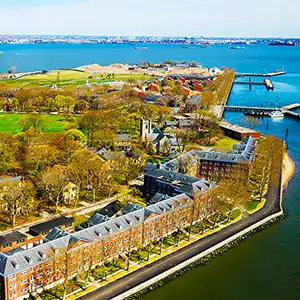
Nestled in the heart of New York Harbor, Governors Island is a verdant oasis that stands as a testament to New York City's multifaceted character. Just 800 yards from Lower Manhattan, this 172-acre island offers an escape from the hustle and bustle of city life, inviting visitors into a world where history, art, and nature coalesce beautifully. From the moment passengers disembark from the ferry, which itself provides stunning views of the Statue of Liberty and Ellis Island, it's clear that Governors Island is no ordinary destination.
The island's rich history, which spans several centuries, is palpable in every corner. ...
26. Battery Park: Stroll Historic Waterfront Gardens & Harbor Vistas At Manhattan’s Southern Tip
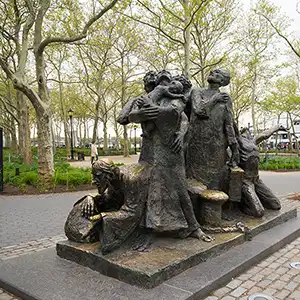
Take a walk in Battery Park, and you step into an open-air sanctuary where the bustle of New York City seems to pause. Perched at the southern tip of Manhattan, this lush expanse of green offers not only respite from the city's unending energy but also a rich tapestry of history, culture, and breathtaking views. As a travel writer who has traversed the globe, I find Battery Park to be a unique blend of natural beauty and historical significance, making it a must-visit for anyone exploring the Big Apple.
As you meander through the winding paths of the park, the ...
Entertainment and Culture
27. Coney Island: Ride Historic Thrills & Relax On Brooklyn’s Vibrant Beachfront Boardwalk
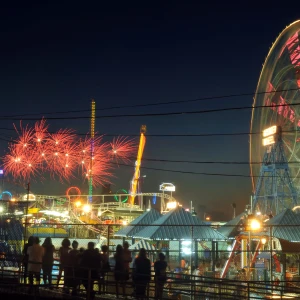
Coney Island, a name synonymous with seaside fun and entertainment, is one of New York City's most iconic destinations. Located in the southern part of Brooklyn, this neighborhood and entertainment area offers a blend of historic charm and modern thrills, making it a beloved spot for both locals and tourists. From its famous beach and boardwalk to the legendary amusement parks, Coney Island encapsulates the spirit of New York's more playful side, inviting visitors to step into a world of excitement and nostalgia.
The heart of Coney Island's allure is undoubtedly its amusement parks. Luna Park, with its electrifying array ...
28. Madame Tussauds New York: Pose With World-Famous Wax Figures & Interactive Hollywood Experiences In Times Square
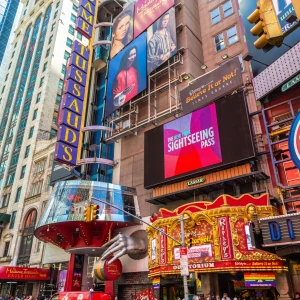
Madame Tussauds in New York is not just a museum; it's an adventure into the glamorous, the historic, and the fantastical, all wrapped in one. Nestled in the heart of Times Square, this iconic attraction offers more than just the opportunity to rub shoulders with celebrities - it's a gateway into a world where history, pop culture, and art collide. Visiting Madame Tussauds provides a unique blend of education, entertainment, and excitement, making it an essential stop for anyone looking to experience the pulse of New York City.
Upon entering Madame Tussauds, visitors are immediately drawn into a realm where ...
Adventure and Sports
29. Yankee Stadium: Experience The “House That Ruth Built” & Iconic Home Of The New York Yankees

Stepping into Yankee Stadium is like walking into the heart of baseball history. As the home of the New York Yankees, one of the most storied franchises in all of sports, this iconic venue offers visitors more than just a game; it provides an immersive experience into America's pastime. From the moment you approach its grand facade, you feel the anticipation building, a testament to the legends who have played on its hallowed ground.
The architecture of Yankee Stadium itself is a marvel. Upon entering, one is greeted by spacious concourses filled with an array of memorabilia and merchandise, offering ...
Local Markets and Bazaars
30. New York Chinatown: Savor Authentic Flavors & Vibrant Culture In Manhattan’s Historic Immigrant Enclave
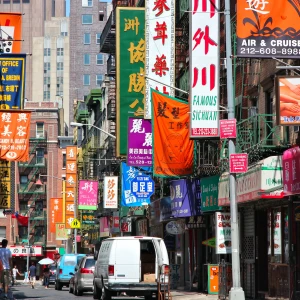
As a travel writer constantly on the lookout for vibrant and culturally rich destinations, few places capture the essence of cultural immersion quite like a stroll through an iconic Chinatown. Nestled in the heart of bustling metropolises across the globe, from San Francisco to Singapore, these enclaves stand as a testament to Chinese influence and heritage outside of China. The moment you step into Chinatown, you're greeted by an explosion of sights, sounds, and smells that immediately transport you thousands of miles across the Pacific.
The architecture is one of the first things that catches your eye, with embellished pagoda-style ...
Hidden Gems and Off-the-Beaten-Path
31. Greenwich Village: Wander Bohemian Streets & Historic Landmarks In Manhattan’s Artistic Heart
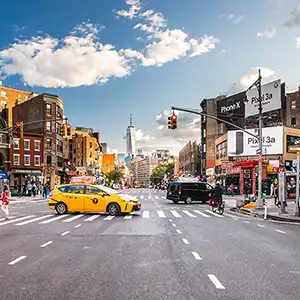
Greenwich Village, often simply called "the Village," is one of New York City's most iconic neighborhoods, embodying a rich tapestry of cultural history, artistic expression, and bohemian lifestyles. Nestled in Lower Manhattan, this neighborhood has long been a haven for artists, writers, musicians, and activists, whose influence is palpable in its winding streets, historic brownstones, and vibrant public spaces. The Village's unique charm lies in its ability to blend the old with the new, creating an atmosphere that is both timeless and dynamic.
The heart of Greenwich Village is Washington Square Park, known for its iconic arch and sprawling green ...
32. Chelsea Market: Explore NYC’s Iconic Food Hall & Historic Biscuit Factory In The Heart Of The Meatpacking District
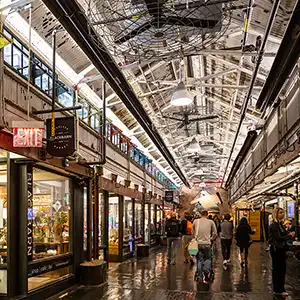
Nestled in the heart of Manhattan's bustling Chelsea neighborhood lies the Chelsea Market, an iconic destination for both seasoned travelers and locals alike. This vibrant enclave offers an immersive experience that blurs the lines between culinary adventure and historical exploration. Once a Nabisco factory, where the world-famous Oreo cookie was invented, the market has since transformed into a dynamic space that showcases New York City's eclectic food scene and its rich industrial heritage.
As you meander through Chelsea Market's arched entryway, the scent of fresh artisan bread and the sound of lively chatter welcome you into a world that celebrates ...
33. East Village: Explore Bohemian Streets & Eclectic Eats In Manhattan’s Creative Heart
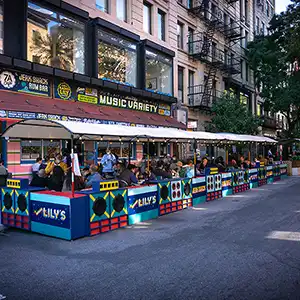
The East Village, a vibrant neighborhood nestled in the heart of Manhattan, offers a rich tapestry of history, culture, and gastronomy that beckons the curious traveler. This eclectic enclave, known for its bohemian spirit, pulsates with the energy of its diverse inhabitants and the stories etched into its streets. A walk through the East Village is not merely a pedestrian affair but a journey through the very essence of New York City's perpetual rebirth and transformation.
Commencing at St. Mark's Place, a street synonymous with counterculture, one immediately encounters the juxtaposition of the old and new. Vintage boutiques, quirky shops, ...
Music and Performances
34. Broadway Shows: Experience New York’s World-Class Theatre On The Iconic Great White Way
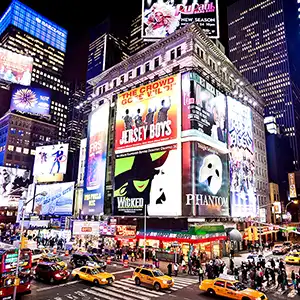
Broadway shows, an emblematic feature of New York City's vibrant cultural scene, offer an immersive experience into the world of theater that is unparalleled anywhere else in the world. Nestled in the heart of Manhattan, the Broadway district is home to some of the most innovative, captivating, and diverse theatrical performances, drawing millions of visitors each year. The allure of Broadway lies not only in the marquee lights and the historic theaters but in the transformative stories that unfold on stage, offering a spectrum of narratives that range from heart-wrenching dramas and uproarious comedies to mesmerizing musicals and avant-garde productions.
...35. Radio City Music Hall: Experience The “Showplace Of The Nation” With Art Deco Grandeur & Legendary Rockettes Spectaculars
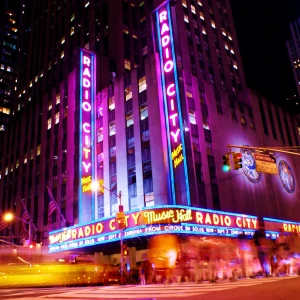
Nestled in the bustling heart of New York City, Radio City Music Hall is an emblem of the city's rich history and cultural significance. This iconic entertainment venue, dubbed 'The Showplace of the Nation,' continues to captivate audiences from around the globe, making it one of the most visited performing arts centers in the world.
The hall's mesmerizing Art Deco design, dating back to 1932, brilliantly captures the glitz and glamour of New York's Golden Age. Since its inception, Radio City Music Hall has been a beacon for top-tier talent and legendary performances, including the famous Rockettes, the preeminent dance ...
36. Carnegie Hall: Witness World-Class Performances In New York’s Legendary Concert Palace
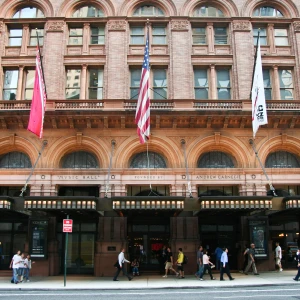
Stepping through the venerable doors of Carnegie Hall is not just an entrance into a building; it's a passage through time, a walk along the pathways of musical legends and a ticket to one of the most incredible acoustic experiences known to the auditory senses. Opened on May 5, 1891, with a concert conducted by the legendary composer Tchaikovsky, Carnegie Hall has since established itself as a beacon of musical excellence, drawing performers and audiences from across the globe. Its rich history parallels the chronicle of classical music, having hosted performances by virtuosos such as Leonard Bernstein, Maria Callas, and ...
37. Lincoln Center For The Performing Arts: Experience World-Class Opera, Ballet & Orchestras On Manhattan’s Cultural Campus
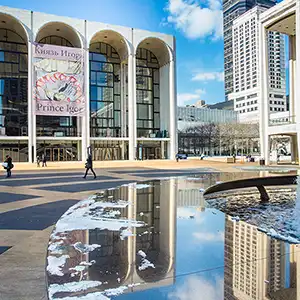
Stepping into the vibrant heart of New York City's cultural scene, the Lincoln Center for the Performing Arts emerges as not just a destination, but as a celebration of artistic excellence and diversity. This illustrious venue, sprawling over 16 acres in Manhattan’s Upper West Side, is a beacon for lovers of music, dance, opera, and film from around the globe. Its iconic status is not just a testament to its architectural grandeur, but to the breadth of experiences it offers to those who walk through its doors.
The Lincoln Center comprises 11 resident organizations, each contributing its unique flavor to ...
38. Apollo Theater: Celebrate Harlem’s Legendary “Soul Of American Music” & Iconic Amateur Night Stage
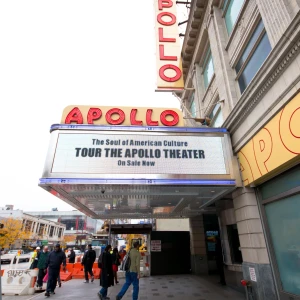
The Apollo Theater, situated in the heart of Harlem, New York City, is more than just an entertainment venue; it is a cultural landmark that has played a pivotal role in shaping American music history. Since its inception in 1914, the Apollo has been a beacon of African-American culture and talent, launching the careers of countless legendary artists across genres like jazz, R&B, soul, and hip-hop. The theater's iconic status is rooted in its tradition of "Amateur Night," a platform that has introduced the world to stars like Ella Fitzgerald, Jimi Hendrix, and Lauryn Hill.
Walking into the Apollo Theater, ...
Religious and Spiritual Sites
39. St. Patrick’s Cathedral: Marvel At Neo-Gothic Splendor & Sacred Heritage On Fifth Avenue
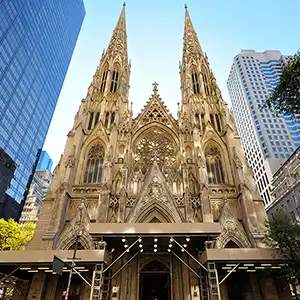
Perched majestically on Fifth Avenue and engulfed in the bustling heart of New York City, St. Patrick's Cathedral stands not just as a beacon of faith, but also as a testament to incredible Gothic Revival architecture. This Roman Catholic cathedral, dedicated to St. Patrick, the patron saint of Ireland, invites millions of visitors every year, making it an indispensable part of any travel itinerary. As a travel writer who has trodden the globe, I can attest to the mesmerizing experience that awaits you beyond the intricate doors of this sacred monument.
Constructed in 1879, St. Patrick's Cathedral appears as if ...
Wildlife and Nature Reserves
40. Bronx Zoo: Explore North America’s Largest Urban Wildlife Sanctuary With 265+ Species & Immersive Habitats

The Bronx Zoo, located in the heart of the Bronx in New York City, is not only one of the largest zoos in the United States but also a pioneer in animal conservation and wildlife education. Spread over 265 acres of parkland and naturalistic habitats, the zoo is home to over 4,000 animals representing more than 650 species. A visit to the Bronx Zoo is a journey into the diverse and dynamic world of wildlife, offering an immersive experience that educates, entertains, and inspires conservation efforts.
One of the zoo's hallmarks is its commitment to creating environments that closely mimic ...
















